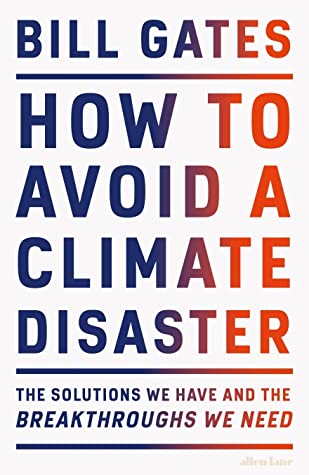How to Avoid a Climate Disaster: The Solutions We Have and the Breakthroughs We Need
Bill Gates
My rating 5/5

This book was released around a month ago and is the most up to date compilation of issues and challenges surrounding climate change. What I love about this book is that it is markedly different in tone than what many climate activists advise - no angry rhetorics or morally high sounding stances. Crossing the Atlantic in a boat is not an option for everyone and asking the global population to give up on meat is simply non-practical. Bill Gates accepts the fact that global progress involves increasing need for energy and accepts that, especially in developing countries people will need to use more energy as they get richer and that this is a welcome thing. However, it is still an important goal to get to zero and there are practical ways to achieving that. The first few chapters discuss the status quo on how bad our emissions are - 51 billion tons of CO2 a year- and how exactly we cause them, segmented by our needs for cooling/warming, transportation, manufacturing, agriculture and electricity. He also discusses technological innovations in each of these segments rated on their feasibility towards reducing emissions. He ends the book with the role governments and individuals can take towards lowering climate change.
For a long time, I had been under the impression that climate change is a collateral damage to development and coming from a developing country with ridiculously low per capita consumption of power, reducing that further and sacrificing on human development was a method that didn’t make sense. However, this book makes me hopeful that development doesn’t have to come at the cost of the planet and with innovation and collective effort, we can harvest clean energy. The climate disaster waiting to happen if we change nothing will be costly and urgent. Secondly, if we envision a future where humanity spreads to Mars and the Moon, there is simply no way for us to power these without solving nuclear fusion to feed commercial electricity production because no other energy source is as dense or as sustainable as fusion. Thirdly, markets can play a powerful role in reducing emissions by innovating on technologies that consumers want- such as plant-based/lab-grown meat, electric cars and efficient air conditioners. Private investment and entrepreneurs have a significant role to play because we need to innovate technologically to make emission targets and consumer demand meet. Fourthly, while we work on long range problems, we definitely need short-term hacky measures such as aerosols to make clouds reflective, thorium reactors to buy us time to while we fix our emissions. This book definitely leaves me conscientious about my own carbon footprint and energy usage.